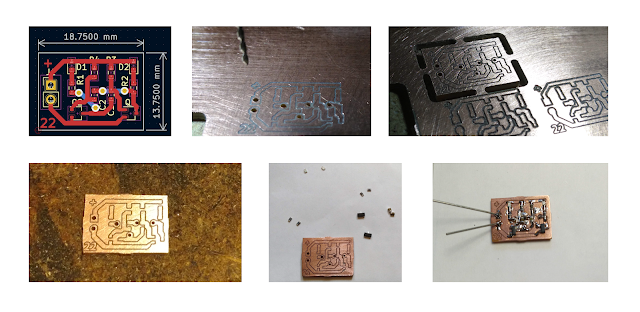I'll be adding here some tips and how-tos on how on FlatCAM 8.994, an Open-Source PCB CAM tool.
This is a work in progress and it's mostly for my own reference. I'll be updating it as I discover new stuff. Note that procedures shown may not be correct or the most efficient. This is provided "as is".
FlatCAM's website: http://flatcam.org/
Installation: https://bitbucket.org/jpcgt/flatcam/downloads/
Create and save new project:
Load Gerbers & Excellon:
Single-sided isolation routing:
On the left pane, double-click your front copper gerber, and you'll be taken to a Properties window. Choose Isolation routing. If the left pane somehow disappears, you may go to View > Toggle project/Properties/Tool.
On tools & tools library:
From within the isolation window, delete default tools and choose the tool you want to use, or create a new one. See the screenshow on how to do so.
Here is how to configure a traditional V bit.
To be continued... Soon (TM) Don't you find it annoying when you are faced with this words, only to see the post is three years old? :)
Example PCBs
LED flasher schematic
Working demonstration
Rev. A PCB
0.5 & 0.8 mm traces (20 & 30 mil). Isolation routing, 0.1 mm depth, single pass. A pain to solder.
Rev. B PCB
0.3 & 0.5 mm traces (20 & 10 mil). Isolation routing, 0.1 mm depth, single pass (approx 2-3 min). Copper clear (approx 15 min). Easy to solder. Cleaning traces with an abrasive sponge is a bad idea with this thin traces...
Bottom left: Guess which one was done before and which one after tightening the screws on my CNC machine.








Comments
Post a Comment